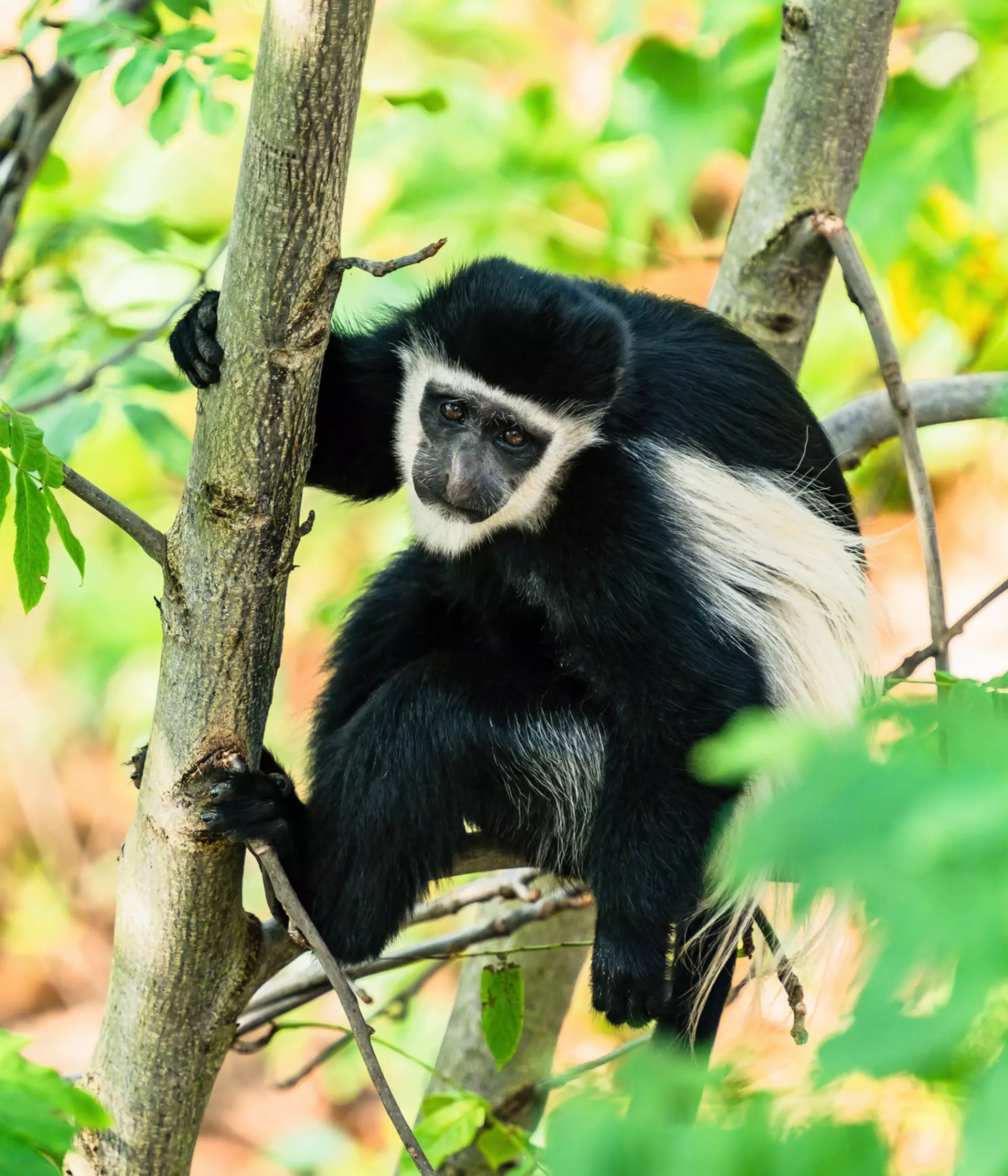Area of zoo
Pink zone
Enclosure status
Open
Population in the wild
Widespread
IUCN status
Least Concern
Scientific name
Colobus guereza
Order
Primates
Type
Mammals
Family
Cercopithecidae
Region
Equatorial Africa
Habitat
Forest, woodlands, or wooded grasslands
What do eastern black-and-white colobus monkeys look like?
These long-tailed monkeys have a largely black coat with a fringe of long white hairs and a large white tuft at the end of the tail.
They have just four long fingers on each hand and a bump where you'd expect to see a thumb.
Eastern black-and-white colobus facts
- Colobus monkeys spend most of their time sitting in the tops of trees but also feed and travel on the ground.
- Females invite males to mate by lip smacking.
- Babies are pure white for the first few weeks of life and later develop their black and white coats.
- The name 'colobus' means 'he cut short' and refers to the species' stumpy thumb.
- Colobus monkeys are herbivores and live high up in the canopy. They live in small groups with one male and a number of females and their offspring.
- Discover more incredible facts about about colobus monkeys: 5 things you didn't know about our colobus monkeys
See Eastern black-and-white colobus monkeys at London Zoo
Tickets
Book your tickets now to see our eastern black-and-white colobus monkeys at London Zoo
What do eastern black-and-white colobus monkeys eat?
Leaves, fruit and flowers.
Eastern black-and-white colobus monkey habitat
Forest, woodlands, or wooded grasslands.
Where do eastern black-and-white colobus monkeys live?
Equatorial Africa.
What threats do eastern black-and-white colobus monkeys face?
Deforestation and hunting by eagles, leopards, chimpanzees and by humans for their skins.
Where can I find eastern black-and-white colobus monkeys at London Zoo?
You can find our troop off high-flying colobus monkeys in their Monkey Valley home.
London Zoo Newsletter
Get the latest updates about exciting animal news from the Zoos, upcoming events, experiences, offers
